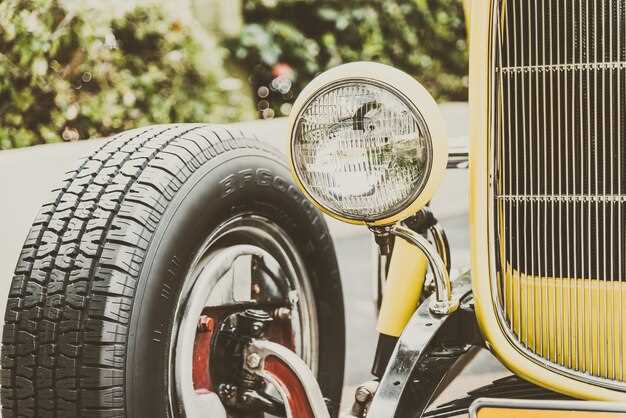How to Start Your Own Classic Car Club

Starting your own classic car club can be an exciting venture that brings together enthusiasts who share a passion for vintage automobiles. Organizing a club requires careful planning and a clear vision to create a welcoming environment for members to connect, share experiences, and enjoy their hobby. This guide will provide you with a comprehensive overview of the essential steps to establish and maintain a thriving classic car community.
The first step in creating your club is to define its purpose and goals. Do you want to focus on restoration, showcasing vehicles, or perhaps organizing events? Clarifying your mission will help attract like-minded individuals who are eager to join your club. Effective organization is crucial to ensure that members feel engaged and motivated. This involves setting up regular meetings, planning outings, and creating a platform for communication.
Once you have a clear vision, it’s time to recruit members. Start by reaching out to local car shows, forums, and social media groups where enthusiasts gather. Emphasize the benefits of joining your club, such as access to exclusive events, networking opportunities, and shared knowledge. Remember, fostering a sense of community is essential for the longevity and success of your classic car club.
Choosing the Right Theme and Focus for Your Classic Car Club
When organizing a classic car club, selecting an appropriate theme and focus is crucial to attract members and ensure long-term engagement. A well-defined theme can create a sense of belonging and purpose among enthusiasts.
Consider the following aspects when deciding on the theme and focus of your club:
- Specific Era or Model: Choose a particular decade or model that members are passionate about. For instance, a club dedicated to 1960s American muscle cars or vintage British roadsters can appeal to specific interests.
- Restoration vs. Preservation: Decide whether your club will focus on restoring classic cars to their former glory or preserving them in their original condition. Each approach attracts different types of members with unique skill sets.
- Activities and Events: Think about the types of activities your club will organize. Will you host car shows, group drives, or technical workshops? Tailoring your theme to these events can enhance member participation.
- Community Engagement: Consider incorporating community service or charitable activities into your club’s focus. This not only promotes goodwill but also provides additional motivation for members to participate actively.
Once you have determined the primary theme, communication with potential members is vital. Use platforms like social media and local car shows to gauge interest and collect feedback. This can help refine your focus and ensure it resonates with a wider audience.
Ultimately, a well-conceived theme and focus will help your classic car club thrive, fostering camaraderie and a shared passion for automotive history among its members.
Establishing Membership Guidelines and Club Governance

Creating a successful classic car club requires clear membership guidelines and effective club governance. Establishing these parameters will ensure that all members understand their rights and responsibilities, fostering a harmonious environment for car enthusiasts.
Begin by defining the criteria for membership. Consider age requirements, types of classic cars, and the commitment level expected from potential members. For instance, you might decide that members should own a vehicle that is at least 25 years old or have a genuine interest in classic automobiles.
Next, outline the application process. This process can include submitting an application form, attending an introductory meeting, or participating in a trial membership period. This approach will help assess if the individual aligns with the club’s values and objectives.
It is essential to have a clear governance structure. Appoint a board or committee that outlines roles such as president, secretary, and treasurer. This team should be responsible for making decisions regarding club activities, managing finances, and resolving conflicts within the membership. Define the length of terms for officials and set up procedures for electing new members to these positions.
Additionally, implementing rules and regulations for behavior during club events is crucial. Consider policies regarding conduct, participation in club activities, and guidelines for the use of club resources. These rules should be communicated clearly to all members to ensure that everyone understands the expectations.
Lastly, establish a framework for conflict resolution. Members may occasionally disagree, so developing a process for addressing issues is vital. This could involve a mediation system or a committee dedicated to resolving disputes. Having these structures in place promotes transparency and fairness, essential components for any successful club.
By organizing your club with well-defined membership guidelines and governance structures, you create a solid foundation that encourages engagement, fosters camaraderie, and ensures the longevity of your classic car club.
Planning Engaging Events and Activities for Club Members

Creating a successful classic car club involves more than just gathering enthusiasts; it’s essential to plan engaging events and activities that foster camaraderie among members. Start by organizing regular meet-ups, where members can showcase their cars, share stories, and discuss restoration techniques. Such gatherings encourage networking and strengthen the community bond.
Consider hosting car shows, where members can display their classics to the public. This not only showcases the club’s passion for vintage vehicles but also helps attract new members. Collaborating with local businesses for sponsorship or venue space can enhance the event’s visibility and success.
Another idea is to arrange driving tours through scenic routes. These outings allow members to enjoy their cars while building friendships. Ensure the routes include several stops at historical landmarks or interesting locations, providing opportunities for members to learn and connect.
Don’t overlook the potential of educational workshops. Organize sessions on topics like engine maintenance, restoration techniques, or detailing methods. Inviting experienced speakers can elevate the learning experience, making it valuable for all skill levels.
Lastly, consider planning seasonal events such as holiday parties, picnics, or themed rallies. These activities can help maintain high spirits throughout the year and keep members engaged. Always solicit feedback from members to continuously improve and cater to their interests.



